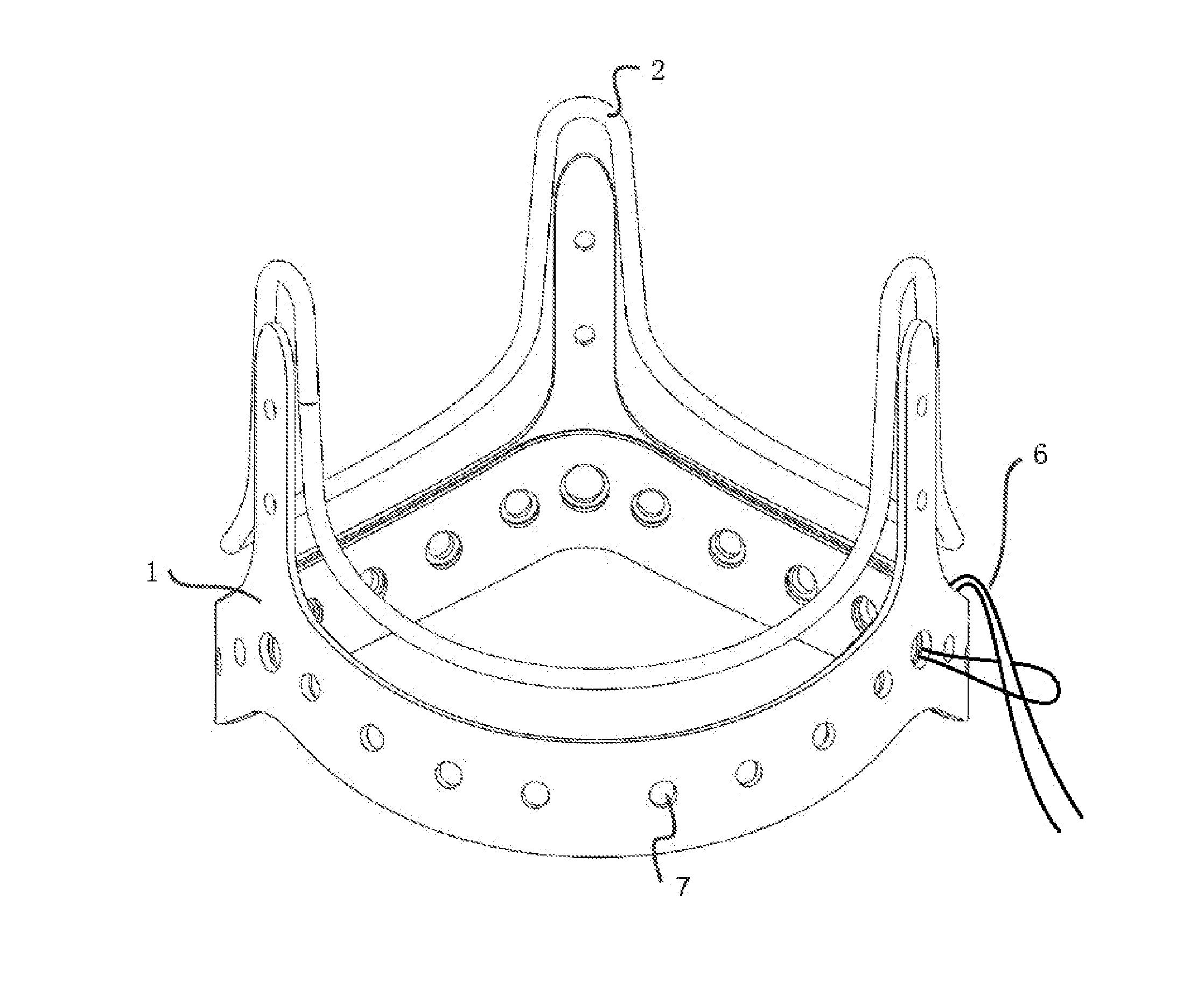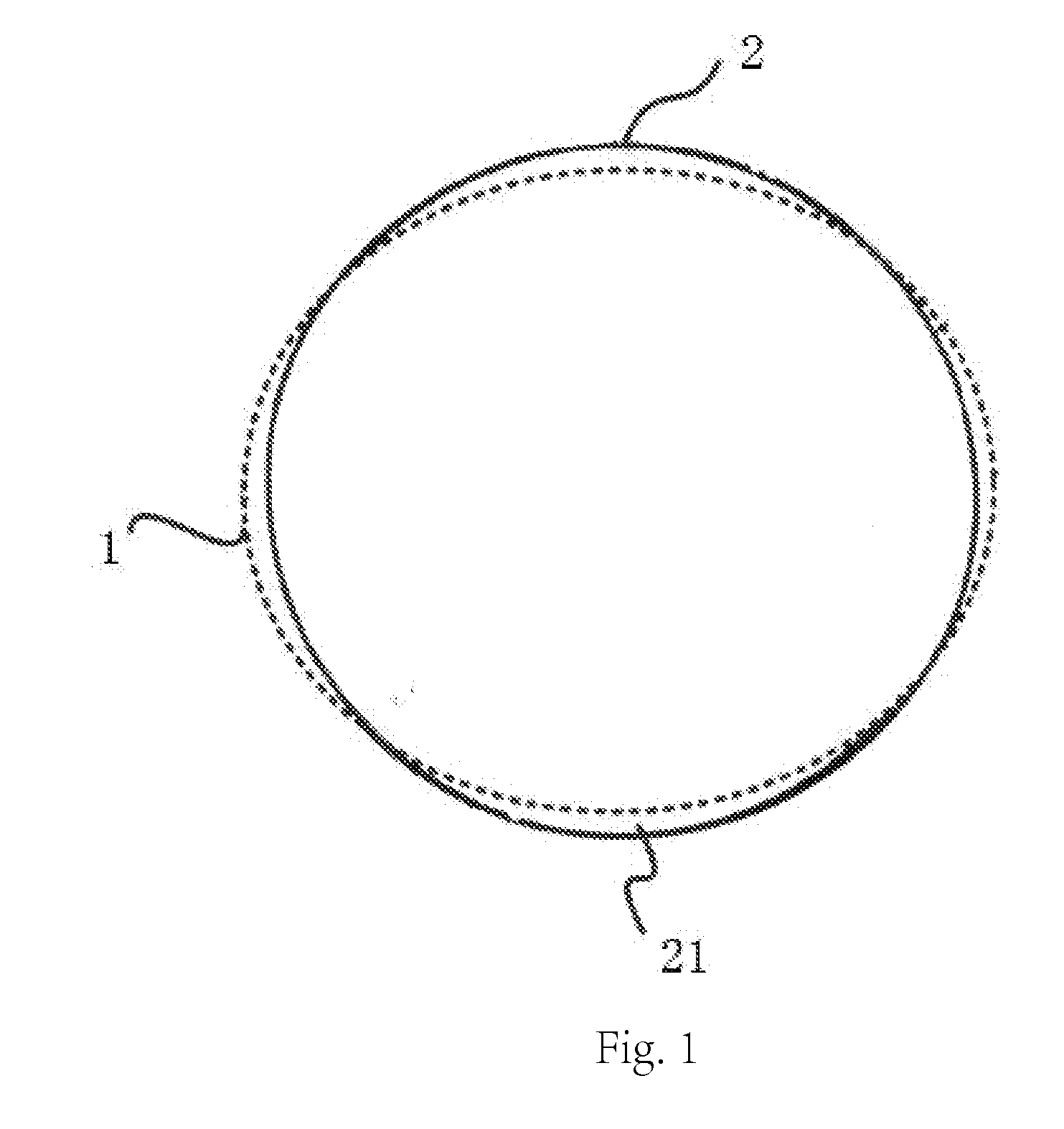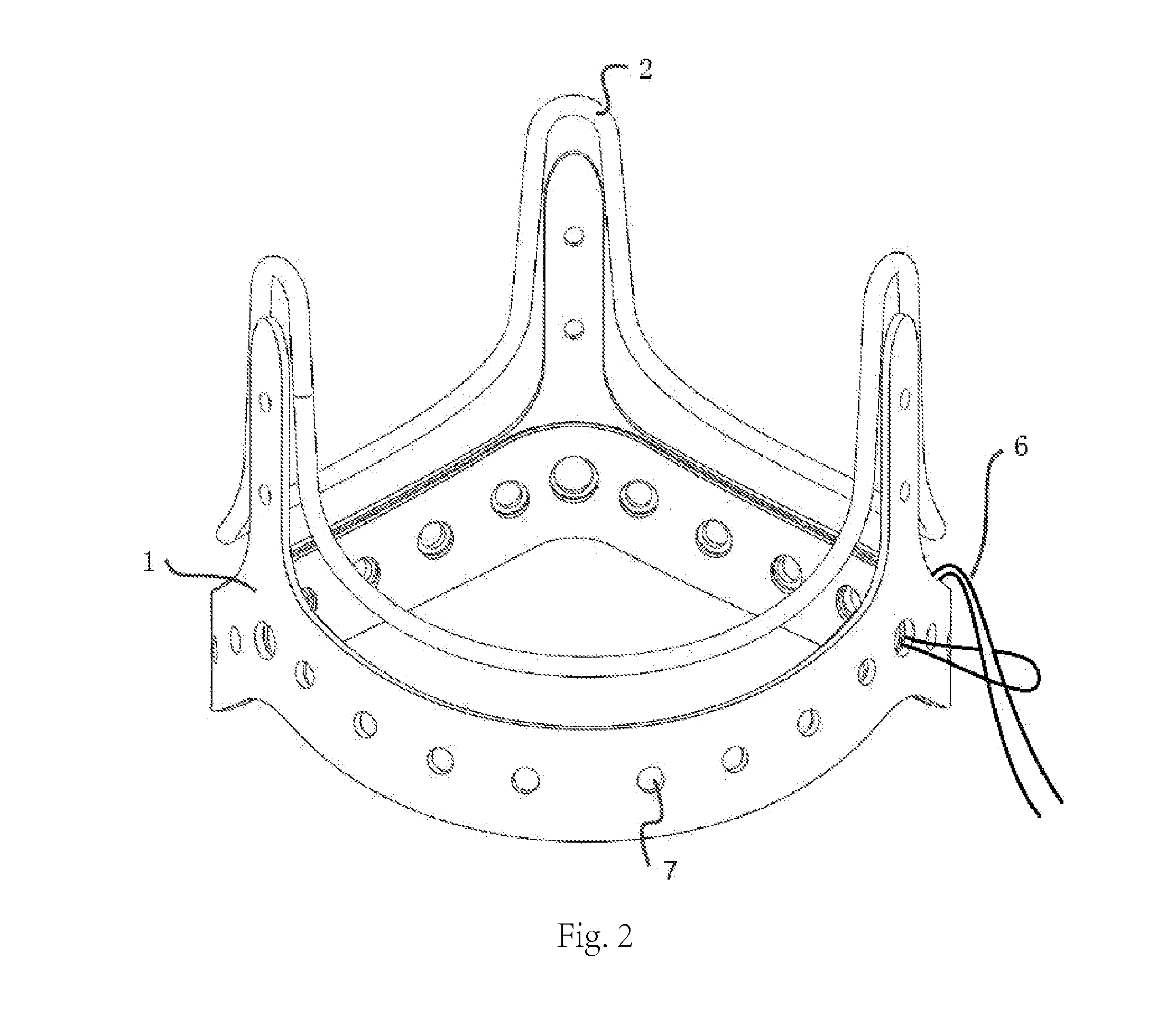Prosthetic heart valve
a heart valve and prosthesis technology, applied in the field of bioprosthetic heart valves, can solve the problems of valve replacement, valve repair, and inability to repair but replace the valve, so as to increase the overall stability of the valve and prolong the service li
- Summary
- Abstract
- Description
- Claims
- Application Information
AI Technical Summary
Benefits of technology
Problems solved by technology
Method used
Image
Examples
first embodiment
[0027]FIG. 2 and FIG. 3 show the prosthetic heart valve provided by the present invention. As shown in FIG. 2 and FIG. 3, the prosthetic heart valve in the embodiment includes a stent 1, an alloy wire 2 and biological tissue leaflets 3, the biological tissue leaflets 3 being sewn to the alloy wire 2 which is wrapped with a first polyester cloth 4, and the alloy wire 2 being sewn to the stent 1 which is wrapped with a second polyester cloth 5, wherein the stent 1 is ring-shaped, comprising a first stent layer 11 and a second stent layer 12 closely hooping with each other: the first stent layer 11 being made of PET, the second stent layer being made of Elgiloy superalloy, the alloy wire 2 being made of Elgiloy superalloy. Both the first stent layer and the second stent layer are arranged with a plurality of round holes 7 aligned with each other, and through the round holes 7, the first stent layer and the second stent layer are fixed by suture 6.
[0028]Furthermore, prior to assembly, t...
second embodiment
[0029]FIG. 4 shows the prosthetic heart valve provided by the present invention. As shown in FIG. 4, the prosthetic heart valve in the embodiment includes a stent 1, a alloy wire 2 and biological tissue leaflets 3, the biological tissue leaflets 3 being sewn to the alloy wire 2 which is wrapped with a first polyester cloth 4, and the alloy wire 2 being sewn to the stent 1 which is wrapped with a second polyester cloth 5, wherein the stent 1 is ring-shaped, having three layers of ring, i.e., comprising a first stent layer 11, a second stent layer 12 and a third stent layer 13. The first stent layer 11 is made of PET; the second stent layer is made of Elgiloy superalloy; the third stent layer is made of PET. The material of the second stent layer 12 in the middle is of higher hardness, while the material of the outermost first stent layer 11 is of relative lower hardness and better flexibility, and prior to assembly, the outer diameter of the second stent layer 12 is slightly smaller ...
PUM
 Login to View More
Login to View More Abstract
Description
Claims
Application Information
 Login to View More
Login to View More - R&D
- Intellectual Property
- Life Sciences
- Materials
- Tech Scout
- Unparalleled Data Quality
- Higher Quality Content
- 60% Fewer Hallucinations
Browse by: Latest US Patents, China's latest patents, Technical Efficacy Thesaurus, Application Domain, Technology Topic, Popular Technical Reports.
© 2025 PatSnap. All rights reserved.Legal|Privacy policy|Modern Slavery Act Transparency Statement|Sitemap|About US| Contact US: help@patsnap.com



